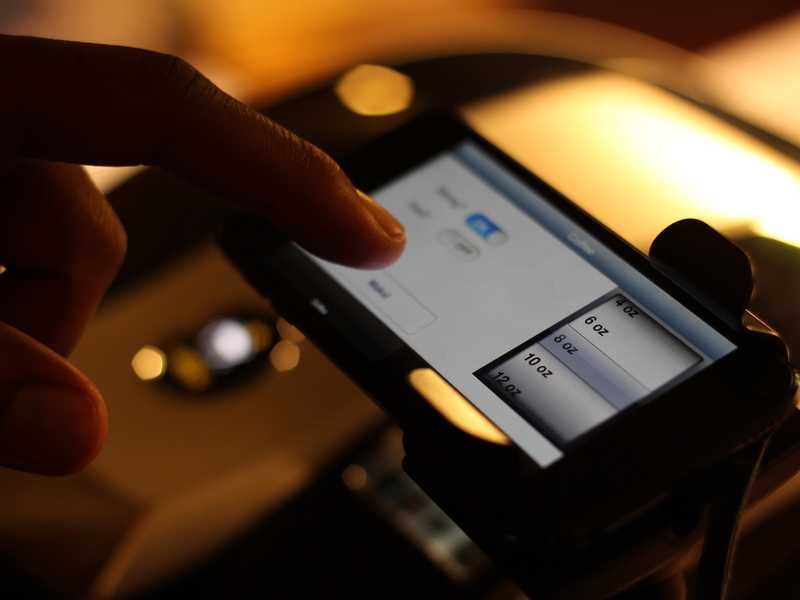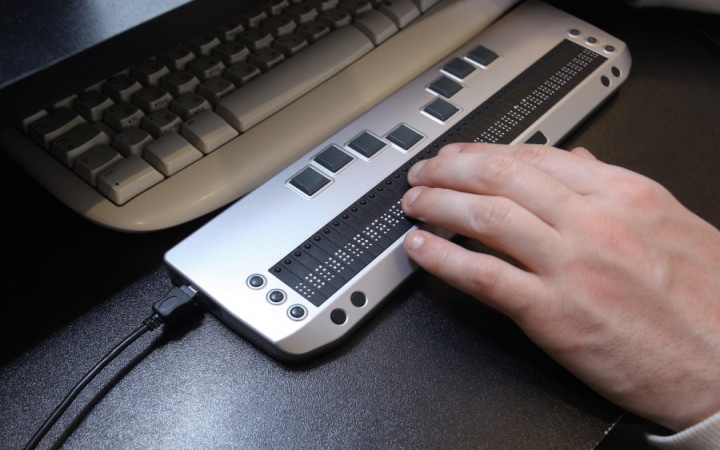Voice-Activated Assistive Devices: Empowering the Visually Impaired
Voice-Activated Assistive Devices: Empowering the Visually Impaired
Blog Article
An Overview to Life-altering Assistive Modern Technology for the Blind and Aesthetically Damaged
The development of assistive technology has actually ushered in a transformative era for individuals that are aesthetically impaired or blind, offering tools that enhance freedom and enrich day-to-day experiences. Innovations such as wise navigating tools and AI-driven applications are redefining how users interact with their environments, while accessible analysis options and smart home technologies promise to more raise the high quality of life.
Smart Navigating Tools
Smart navigation devices are reinventing the way individuals who are blind or visually damaged interact with their environment. These sophisticated innovations, which integrate general practitioners, audio responses, and haptic signals, give customers with essential details about their surroundings, boosting their freedom and wheelchair.
One famous instance is the usage of wise walking canes furnished with sensing units that identify challenges and offer real-time feedback via vibrations or audio hints. These tools allow individuals to browse intricate environments, such as busy streets or crowded public spaces, with boosted confidence. Furthermore, wearable tools, such as wise glasses, are being established to help in acknowledging faces, reviewing message, and determining items, further boosting the user's spatial recognition.
In addition, wise navigation tools are significantly incorporating man-made knowledge to assess data and adjust to individuals' choices. This customized approach not just boosts navigating efficiency but additionally promotes a sense of empowerment amongst users. As modern technology remains to advancement, the possibility for clever navigating devices to produce a more inclusive and obtainable globe for people who are visually damaged or blind remains promising, eventually improving their daily experiences and interactions.
Ingenious Mobile Applications
Mobile applications are becoming powerful devices for assisting people who are aesthetically impaired or blind, offering a range of functionalities that enhance daily living. These apps harness advanced innovation to help with day-to-day jobs, boost availability, and advertise independence.
One classification of innovative mobile applications concentrates on visual acknowledgment. Applications like Be My Eyes connect customers with sighted volunteers by means of video telephone calls, making it possible for real-time support for tasks such as reading tags or navigating unfamiliar settings. Similarly, apps like Seeing AI use expert system to explain surroundings, read message, and determine items, giving individuals with crucial info at their fingertips.
One more substantial area is navigation and alignment. Apps such as Aira and Close-by Traveler provide audio support, helping customers navigate metropolitan spaces easily. They supply personalized support, permitting a much more positive exploration of the environment.
Additionally, health and wellness and wellness apps satisfy details requirements, such as medication administration and fitness monitoring. These applications aim to promote an all natural technique to health, making sure that individuals can maintain their health separately.
Wearable Assistive Devices
Wearable assistive tools stand for a significant development in technology designed to sustain individuals who are visually damaged or blind. These devices boost mobility and freedom by giving real-time responses regarding the surrounding setting. Amongst one of the most remarkable wearable modern technologies are wise glasses equipped with sensing units and cameras, which can determine obstacles and relay critical info through sound cues.

One more cutting-edge alternative includes wrist-worn gadgets that utilize ultrasonic waves to identify obstacles and give navigational support. These tools often include adjustable settings, enabling individuals to customize the alerts to their particular requirements.
The integration of expert system in wearable assistive technology is likewise significant, as it continuously improves the precision and responsiveness of these devices. On the whole, wearable assistive gadgets are transforming the lives of the aesthetically impaired and blind, promoting higher autonomy and enhancing lifestyle through innovative solutions.
Obtainable Reading Solutions
Easily accessible analysis solutions play a vital duty in enabling people that are aesthetically impaired or blind to involve with message throughout numerous styles. These solutions incorporate a variety of tools and technologies created to boost analysis experiences, from traditional print materials to electronic content.
One noticeable option is Optical Character Acknowledgment (OCR) technology, which transforms printed message into digital layout, permitting customers to pay attention to or review the content using display visitors. In addition, specialized e-readers geared up with text-to-speech capabilities offer personalized analysis experiences, allowing users to readjust font sizes and history colors for enhanced explanation visibility.
An additional reliable technique is braille displays, which offer tactile feedback by transforming electronic message into braille. This allows individuals to read through touch, promoting greater self-reliance and accessibility to literature. Mobile applications designed for checking out checked books or files can empower customers with immediate access to a huge collection of materials (Wearable technology for low vision).

Smart Home Technologies
Smart home modern technologies have actually transformed the way individuals that are blind or aesthetically impaired interact with their living atmospheres, boosting both independence and safety and security. These cutting-edge services utilize automation and connection to create an accessible home tailored to the demands of users.
Smart audio speakers and voice-activated assistants supply hands-free control over various tools, enabling users to adjust security, lighting, and temperature level steps through easy voice commands. This functionality minimizes reliance on sighted support and fosters a feeling of autonomy. Additionally, smart lighting systems can be tailored to supply acoustic responses or responsive signs, making it possible for individuals to browse their homes better.
Moreover, safety systems equipped with wise video cameras and sensors can send real-time alerts to individuals, enhancing personal security without demanding aesthetic confirmation. Automated door locks supply peace of mind, allowing individuals to safeguard their homes effortlessly.
Incorporating clever home modern technologies not only enhances day-to-day living yet also motivates social interaction via connected devices - Speech-to-text devices for low vision. With recurring developments in assistive technology, the future shows up encouraging, as even more options will emerge to more empower individuals that are blind or aesthetically impaired, guaranteeing an extra inclusive and independent way of life
Verdict
Finally, the improvements in assistive technology for the blind and visually impaired represent a substantial leap toward boosting self-reliance and lifestyle. Smart navigation devices, cutting-edge mobile applications, wearable gadgets, available reading services, and wise home modern technologies jointly cultivate a comprehensive atmosphere. This integration of modern technology not only improves movement and everyday living yet likewise equips people to engage totally with their environments, promoting better freedom and participation in society.
Technologies useful link such as clever navigation tools and AI-driven applications are redefining how individuals connect with their surroundings, while easily accessible reading services and clever home modern technologies assure to further boost the quality of life. As technology continues to development, the capacity for smart navigation devices to create a much more inclusive and accessible world for people who are visually impaired or blind stays promising, ultimately reshaping their daily experiences and interactions.
Wearable assistive devices stand for a considerable development in technology made to support individuals that are visually damaged or blind. Among the most remarkable wearable innovations are wise glasses outfitted with sensing units and electronic cameras, which can recognize barriers and relay important information with audio cues.
Smart navigating tools, cutting-edge mobile applications, wearable devices, easily accessible heart shaped eyeglasses reading options, and wise home technologies collectively promote an inclusive atmosphere.
Report this page